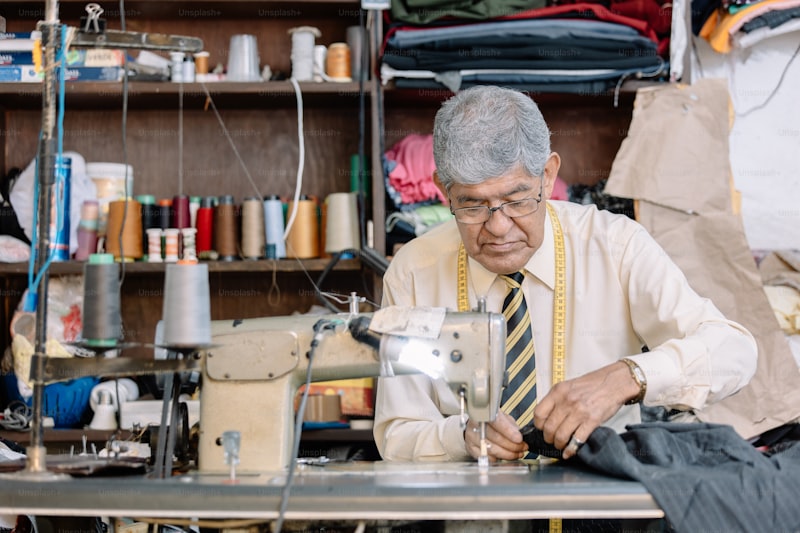Understanding the Timelines for Custom Tailoring: A Comprehensive Guide
Introduction to Custom Tailoring
Custom tailoring is celebrated for delivering garments that fit impeccably to your body shape and style preferences. Unlike off-the-rack clothing, custom tailoring involves creating a unique piece designed specifically for you. However, one of the critical factors to consider when pursuing custom tailoring is the timeline. In this article, we'll delve into the various timelines associated with custom tailoring, factors that can influence these timelines, and tips to ensure a smooth process.
What Is Custom Tailoring?
Custom tailoring refers to the process of designing and creating clothing tailored to an individual’s measurements and style preferences. This personalized approach allows for finer craftsmanship and attention to detail, offering significant advantages over standard garments.
Importance of Timelines in Custom Tailoring
Understanding the timelines for custom tailoring is essential for planning your wardrobe, especially when preparing for special occasions. A clear timeline ensures that you will receive your tailored clothing on time, allowing for fittings and modifications if needed.
The Typical Timelines for Custom Tailoring
The timeline for custom tailoring can vary based on several factors, including the complexity of the garment, the tailor's experience, and the fabric chosen. Below is an overview of typical timelines for various types of custom clothing:
| Type of Garment | Typical Timeline |
| Custom Suits | 6 to 8 weeks |
| Custom Dresses | 4 to 6 weeks |
| Tailored Shirts | 2 to 4 weeks |
| Casual Wear (e.g., pants, jackets) | 4 to 6 weeks |
Factors Affecting Custom Tailoring Timelines
Several factors can influence the completion timeline of your custom garment. Understanding these factors can provide insight into the typical wait times you might expect:
- Complexity of Design: Intricate designs with multiple components or embellishments generally take longer to produce.
- Fabric Availability: Certain fabrics may require longer lead times to source, affecting overall timelines.
- Tailor's Workload: Depending on the tailor’s current projects and workload, your order's priority can influence its completion time.
- Fittings and Adjustments: The number of fittings required and any necessary adjustments can extend the timeline significantly.
The Custom Tailoring Process
The custom tailoring process typically involves several steps, each requiring time for accuracy and quality. Here’s a breakdown of what to expect:
- Consultation: Initial meetings to discuss style preferences, fabric choices, and measurements.
- Taking Measurements: Accurate measurement is crucial, and this typically takes about an hour.
- Fabric Selection: Choosing the right fabric from various samples can take time, depending on the complexity.
- Drafting the Pattern: A tailored pattern is created using the measurements provided, which can take 1-2 weeks.
- First Fitting: After the initial construction, the first fitting allows for adjustments and precise alterations.
- Final Adjustments: Based on feedback during the fitting, the garment is adjusted before the final production.
- Final Fitting: A last fitting ensures that everything fits perfectly before delivery.
- Delivery: Once approved, the final garment is ready for pickup or delivery.
Common Concerns Regarding Timelines
Many clients have concerns regarding the turnaround time of their custom tailored pieces. Here are some common questions asked along with their answers:
- How can I avoid delays? Always communicate your timeline and needs clearly with your tailor; providing ample time for fittings and adjustments can help avoid last-minute issues.
- What if I have a tight deadline? Discuss any deadlines upfront with your tailor; some may expedite the process, though additional fees may apply.
- Can I make changes after the first fitting? Yes, but understand that extensive changes after the first fitting may require additional time.
Tips for a Smooth Custom Tailoring Experience
To ensure a positive experience with custom tailoring, follow these tips:
- Start Early: If you have an event, begin the custom process well in advance, ideally 2-3 months ahead.
- Choose Simple Designs: If you're on a tight timeline, consider simpler designs that require less complex construction.
- Be Communicative: Keep an open line of communication with your tailor to ensure all your needs are met quickly.
- Schedule Fittings Early: Book fittings as early as possible to allow time for adjustments.

Conclusion
In conclusion, understanding the timelines for custom tailoring is crucial for ensuring that you receive your tailored clothing when you need it. By considering factors such as the complexity of the garment and the experience of the tailor, you can create a successful plan. Whether you're seeking a sophisticated suit or a beautiful dress, planning ahead and acknowledging the essential steps of the custom tailoring process will enhance your overall experience. Remember, patience and communication are key to achieving the perfect fit. Happy tailoring!